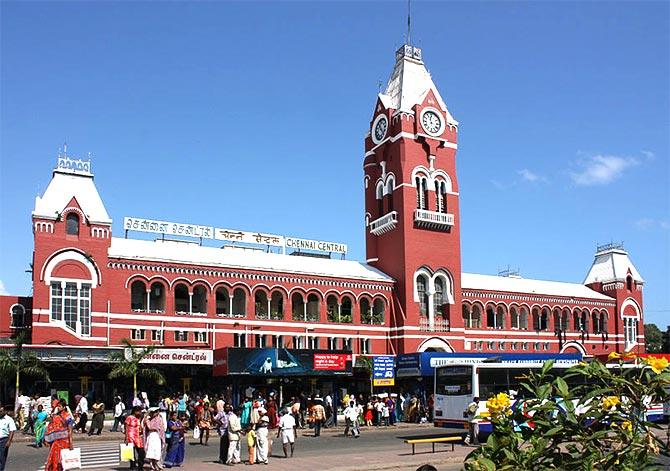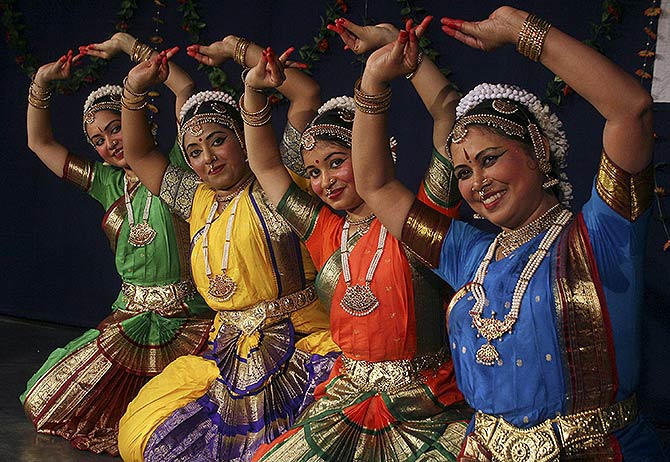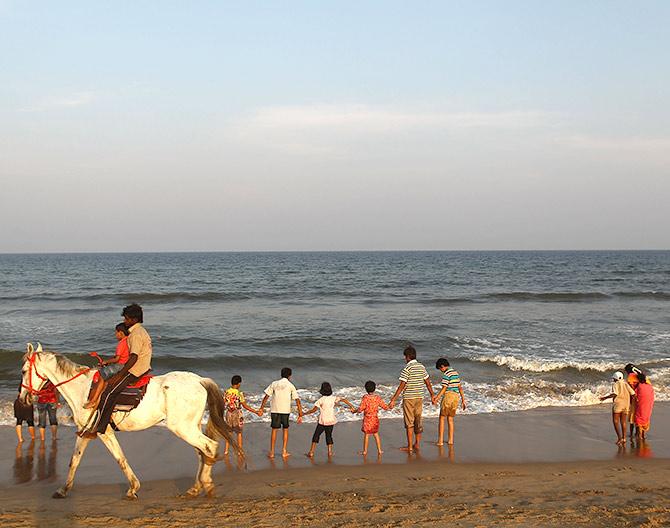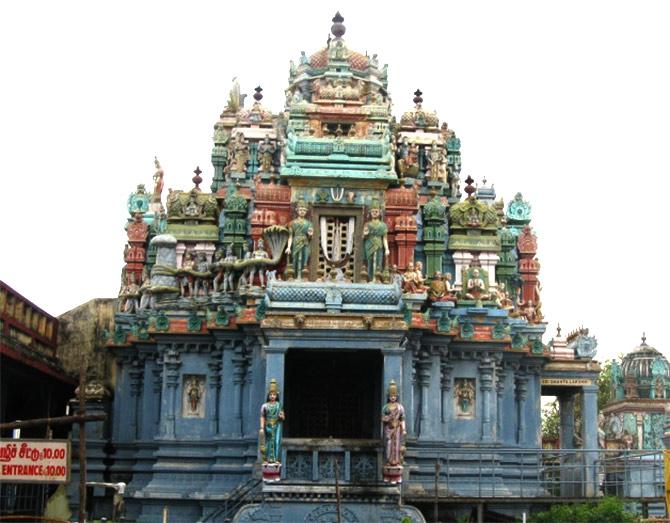इस लेख के अनुसार तमिल भाषा मैं चेन्नई नाम का कोई शब्द नहीं है . तेलगु मैं तो फिर भी कुछ मिलता सा एक शब्द है पर तमिल मैं बिलकुल नहीं है . मद्रास शब्द अवश्य तमिल का है . इस लिए द्रविड़ कषगम का मद्रास के नाम को चेन्नई करना सर्वथा गलत था . १६३९ से पहले तमिल साहित्य मैं मद्रास या वहां पर बसे किसी शहर का जिक्र नहीं हसी . उसके मयलापुर इत्यादि कुछ स्थानों पर लोग बसने लगे . अंग्रेजों ने फोर्ट विलियम मैं बसना शुरू किया तो कई तमिल व् मुस्लिम लोग वहां आस पास बसने लगे . इसलिए यह मन जा सकता है आधुनिक मद्रास शहर १६३९ मैं बसना शुरू हुआ.
परन्तु लेखक का मद्रास शहर के नाम को पुनः वापिस लाना शायद ठीक न हो . कुछ गलतियाँ भी इतिहास बन जाती हैं . परन्तु तमिल संस्कृति के प्रति समर्पित लोग तब क्यों चुप रहे जब नए नाम को खोजा जा रहा था . अब जब बदल ही दिया गया है तो इसे ही चलने दें .मुझे तो किसी शहर का नसं बदलना उचित नहीं लगता चाहे वह मुंबई हो या कोल्कता या चेन्नई .
रीडिफ़ का यह लेख रोचक है .

‘Madras is a Tamil word while Chennai is Telugu. Without the English, there would have been no Madras. The erection of Fort St George laid the foundations for the growth of the first modern city of India,’ historian J B P More tells Shobha Warrier/Rediff.com
As Chennai turned 375 last week, Shobha Warrier/Rediff.com discusses the city of tradition and contrasts with J B P More, a professor at INSEEC whose recent book Origin and Foundation of Madras traces the history of the city.
More, who got his PhD in History from the Ecole des Hautes Etudes en Sciences Sociales, Paris, has written 15 books on various aspects of south Indian history.
In this e-mail interview from Paris, he says the notion that Madras was a European name or it had colonial connotations is completely wrong. It was always a Tamil word, popularly used by the people of Madras and Tamil Nadu, since the foundation of Madras in 1639.
You start by saying there was no Madras before 1639. What was the area called? How did it become Madras?
Before 1639, villages like Mylapore, Tiruvallikeni, Tiruvanmiyur and Tiruvottriyur existed. These villages have in the course of time become parts of Madras city. The old inscriptions found in the temples of these villages do not throw any light on the existence of Madras or Chennai before 1639.
Besides, the Arab, Portuguese, Dutch, Danish, English and French travellers’ accounts as well as official records do not mention the existence of Madras or Chennai either as a port or town before 1639.
There is also no mention of Madras or Chennai before 1639 in the extensive, ancient and medieval Tamil, Telugu and Sanskrit literatures. Therefore the logical conclusion is that Madras did not exist before 1639.
You start your book with the pre-1639 period. How significant is it when you look at the history of Madras?
The pre-1639, villages of Madras like Mylapore or Tiruvanmiyur are very relevant to the writing of the history of Madras on the whole. They were very old villages where several big and magnificent temples like the Parthasarathy, the Kapaleeswarar and the Marundeeswarar had been erected.
The Tamil bhakti saints and poets have sung the glory of these temples. But these villages including that of Santhome, where the Portuguese built a grand church had never developed into towns in the modern sense. If they had, then Madras would have probably not seen light.
It was the founding of Madras by the English on the ‘medu’ in 1639 which led to the growth of Madras into a big modern city. In the course of its expansion, Madras gradually incorporated many of the pre-1639 villages to such an extent that today it is impossible to draw a dividing line between them.

Is there any difference in the character of Madrasapatam before and after the arrival of Europeans?
Yes. There was no Madraspatnam or Madras before the arrival of the Europeans. English records tell us that the area which was given to them in 1639 by the Telugu Nayak Damarla Venkatappa was known as ‘jackal’s ground’ or Nari Medu — mound of jackals.
But after the implantation of Europeans, Madras changed in character. We find not just Englishmen settling in the area, but also Portuguese and people of Indo-Portuguese descent.
However, the chunk of the migrants who settled in the area were Tamils and Telugus. The former were mainly labourers while among the latter there were a number of merchants.
In the course of time, we find Muslims, both Tamil and Urdu-speaking, settling in Madras. Thus Madras acquired a cosmopolitan character right from the beginning. But with the gradual absorption of various neighbouring Tamil villages, Madras became predominantly a Tamil city, with a strong Telugu minority.
Did the English settlement in Madrasapatam change the area in anyway?
The English built their Fort St George on the ‘high plot’ granted to them by Damarla Venkatappa. Tamil and Telugu migrants settled in the vicinity of the Fort right from the time when the Fort was established. This was the area of Madraspatnam in the beginning.
In the course of time several villages were incorporated by the English as parts of Madraspatnam. Egmore, Purasawakkam and Tondiarpet became part of Madras in 1693 and Mylapore Tiruvanmiyur and Adyar and many other Urs, pakkams and pets much later.
Thus without the English, there would have been no Madras. In fact, the erection of Fort St George laid the foundations for the growth of the first modern city of India. This in itself constitutes a major change.

Much has been written on the origin and foundation of Madras, and that includes well known historian, S Muthiah. What prompted you to write another book on the same subject?
Many scholars have written about the history of Madras city. But they have never paid much attention or have paid scant attention to the origin of Madras. Generally they have relied upon the writings of British scholars and administrators like H D Love, William Foster and Wheeler Talboys as well as on the 1820 accounts of Bundla Ramaswamy Naidu.
Of course, S Muthiah is the uncontested ‘chronicler of Madras city’. But an exclusive scientific and detailed historical study on the origin and foundation of Madras was still lacking.
As a historian who has penned several books and articles on Tamil Nadu and south India, I naturally felt that I should fill this gap. Hence I have produced this book after a thorough research and enquiry in Madras and London.
You also write about the Muslim, Christian and Hindu claims to Madras. What are they?
It is believed by some Muslims that Madras was derived from Madrasa, which means Islamic College. It all started with Colonel Henry Yule who in 1886 claimed that there was indeed a madrasa in the Fort St George site in 1639.
However, we all know from the surviving English records including the 1639 grant that the area in which Fort St George came up was just a sandy stretch of land with only jackals and a few fishermen living upon it.
Neither Francis Day nor Damarla Venkatappa or any other English factor or Telugu merchant had mentioned anywhere in their correspondence about the existence of this madrasa. So the contention that there was a madrasa at the site of Fort St George when the English acquired it and that Madras was derived from madrasa needs to be relegated to the realm of fantasy.
Besides, in 1939, another fantastic claim was put forward by a certain Marakkayar, that Madras was derived from Makhras Kuppam. He claimed that Makhras Kuppam was itself derived from Marakkayar Kuppam or Markars Kuppam, as there were a number of wealthy Marakkayars established on the Madras coast.
He also claimed that Marakkayars as well as the Urdu-speaking Nawab Muhammad Ali Wallajah belonged to the same lineage of Hardat Ibrahim Khalilah.
It is impossible to imagine that wealthy Marakkayar traders of Madras of such an illustrious lineage, if at all they existed, had chosen to inhabit in lowly kuppams or fishermen’s villages. Besides, my recent researches have established that Marakkayars were actually descendants of Malayali Marakkar warriors and traders who had migrated to the Sozhamandalam coast from the Malabar Coast.
The claim that Madras had a Christian origin must be traced to the fantastic account of Bundla Ramaswamy Naidoo of 1820. He claims without providing any evidence that the original Madras site was acquired from one Christian fisherman called Madaresan.
About a century later in 1927 Reverevend A M Texeira of Madras claimed that Madras was derived from a wealthy Portuguese family called Madra. Later it was said that Madaresen was converted to Christianity by Madra and that is why he adopted the name of Madra by tamilising it as Madarsen.
It was also said that Madras was derived from Madre-de-Dios (Mother of God) church established by the Portuguese. However, after enquiry we found that these claims were completely unfounded born out of the fertile imagination of its authors and was not based on any real evidence or historical reality.
There is no indication in the Portuguese and other European records or travel accounts related to Madras or Mylapore or in Tamil or Telugu literature or inscriptions of the period that Madras was named after Madaresan or Madre-de-Dios or some other Portuguese Christian like Madra or Madeiras.
Scholars with a religious bent of mind like V Raghavan in 1939 and N S Ramasawamy more recently have claimed that Chennapatam was derived from Chenna Kesava Perumal temple built in 1646. But records show that Chennapatna or Chennapatam was already in existence before the temple was built.
When the Kesava Perumal temple was built by Telugu merchants in 1646, it rightly assumed the name of Chenna Kesava Perumal temple, as the temple was located in Chennapatam. Here ‘Chenna’ simply means fair. Therefore the view that Chennapatam has a religious significance becomes untenable.

When the DMK decided to change the name of Madras to Chennai in 1996, it was of the view that Madras was not a Tamil name, and Chennai was. But you assert that Medraspatam and Madras were Tamil words, and there was no colonial hangover to the word Madras. Why do you say so?
In my work on Madras, I have proved beyond any doubt that Madras was a Tamil name derived from ‘medu’ and ‘medurasapatnam’. I made this discovery only recently after an extremely patient and painstaking research. But in 1996 when the DMK changed the name of Madras to Chennai, nobody including the Tamil scholars of Tamil Nadu knew that Madras was a Tamil name.
Mr M Karunanidhi, who was the then chief minister of Tamil Nadu, had no reason to know about it either. They were unfortunately persuaded to believe that Madras was a colonial hangover. But there were scholars like S Muthiah who had affirmed following Bundla Ramaswamy Naidoo that Chennai was indeed a Telugu word.
For reasons that we do not know the DMK had preferred to ignore their affirmations.
Besides, one should not forget that when the Europeans ruled India, they rarely imposed European names on Indian towns and cities especially the coastal ones. Instead they anglicised the Indian names so that it sounded English.
Thus Mumbai became Bombay, Kolkata became Calcutta, Pandichery became Pondicherry, Tarangapadi became Tranquebar, Kannur became Cannanore and Tiruvananthapuram became Trivandrum.
In the same way, Medraspatam derived from ‘medu’ became Madras. Therefore the DMK notion that Madras was a European name or it had colonial connotations is completely wrong.
It was always a Tamil word, popularly used by the people of Madras and Tamil Nadu, since the foundation of Madras in 1639. If it had a European origin, the English factors like Francis Day would have been the first to note it as they had done in the case of Fort St George.
You say categorically in your book that Chennai doesn’t mean anything in Tamil. Did anyone from the DMK respond to your book?
There is no word as ‘Chennai’ in the Tamil lexicon. Therefore, Chennai is undoubtedly not Tamil.
Several Tamil and Telugu protagonists have contacted me and have even admitted in person that a mistake has been committed in good faith in renaming Madras as Chennai.
But in my work on Madras, I have also established that Chennai was a Telugu word derived from Chenna and Chennapatam. ‘Chenna’ meant ‘fair’ in Telugu. In Tamil it had no meaning. I have also established that Chenna was not derived from Chennapa Nayak, the father of Damarla Venkatappa.
In the genealogical list prepared by Colin McKenzie in 1800, there is no mention of Chennapa as the father of Venkatappa. Besides, Bundla was affirming something that happened in 1639 some 180 years later without the slightest documentary proof.
In the course of time, the records prove that Chennapatam gains ascendancy over Chinapatam which gradually sinks into oblivion. Chennapatam became Chenna and it was Tamilised further as Chennai in the course of time.
It is a pure Telugu word. There is nothing Tamil in it, except for the form.
Some even suggested that Chennai should be dropped by the present Tamil Nadu government led by Ms Jayalalithaa and the historical name of Madras so dear to many Tamilians should be re-instated as the name of the capital city of Tamil Nadu.
